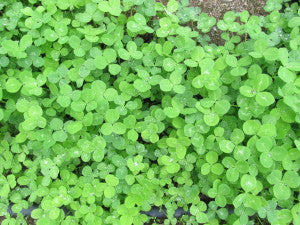
Fall Gardening: The October To-do List
October marks the last curtain call for tender plants. As more plants die back and more beds empty, a nice moment opens up to think about your garden’s future. October, with its colder, wetter, shorter days, shortens the to-do list and sowing opportunities, but provides a great opportunity to prioritize tasks that will benefit you and your garden into the next growing season.
Sow What Now? Winter hardy greens like Mache and Spinach can still be sown this month and into the winter. They will grow roots with each warm day, thaw in the coldest months, and in early spring, will grow foliage for next season’s first salads. But, the theme of this month’s sowing opportunities aren’t seeds, but bulbs.
This is a perfect month for planting garlic. Garlic needs a bed with lots of organic matter as well as mulch. For detailed planting instructions, have a look at our recent post How to Grow Garlic. To learn more about this potent plant’s history and cultural reputation, take a look at our Garlic Plant Personality post.
 October is not only great to plan(t) ahead for your taste buds, but for visual feasts as well. Fall-planted flower bulbs like Alliums, Crocuses, Daffodils, Irises, Muscari, and Tulips can be sown now, and will be ready to emerge colorfully in early spring. Bulbs, unlike seeds, like to be placed deep in the ground. Dig a hole that is two or three times deeper than the bulb. Plant it right side up: the round end of the “tear-drop” should be on the bottom, pointy end facing up. Cover back up with soil and water in well to help the bulb establish roots. Flowering bulbs look extra good when grown fairly closely together like a loose bouquet, so consider scattering them about (still mostly following the suggested spacing) instead of planting in straight rows. Keep the planted area weeded to eliminate the competition for water and nutrients. If you find that some bulbs get “un-planted” by hungry critters, consider protecting your bulb bed by laying down a sheet of chicken wire over it removing when the plants sprout in the spring. Aim to plant fall bulbs anytime before the ground freezes (which will be a few weeks after the first frost date). For more tips and help choosing the right bulb, read Bright Ideas. A Flower Bulb For Every Purpose.
October is not only great to plan(t) ahead for your taste buds, but for visual feasts as well. Fall-planted flower bulbs like Alliums, Crocuses, Daffodils, Irises, Muscari, and Tulips can be sown now, and will be ready to emerge colorfully in early spring. Bulbs, unlike seeds, like to be placed deep in the ground. Dig a hole that is two or three times deeper than the bulb. Plant it right side up: the round end of the “tear-drop” should be on the bottom, pointy end facing up. Cover back up with soil and water in well to help the bulb establish roots. Flowering bulbs look extra good when grown fairly closely together like a loose bouquet, so consider scattering them about (still mostly following the suggested spacing) instead of planting in straight rows. Keep the planted area weeded to eliminate the competition for water and nutrients. If you find that some bulbs get “un-planted” by hungry critters, consider protecting your bulb bed by laying down a sheet of chicken wire over it removing when the plants sprout in the spring. Aim to plant fall bulbs anytime before the ground freezes (which will be a few weeks after the first frost date). For more tips and help choosing the right bulb, read Bright Ideas. A Flower Bulb For Every Purpose.
 Cover Crops and Soil Care: As patches of bare soil open up in the garden, take time to make sure your soil is healthy, fed, and ready for next season. Now is the time to add balance and add in nutrients, through amendments and cover crops. Before fall plantings, consider an additional application of one inch of compost as well as a repeat of your regular amendment regimen to keep your soil strong. For a cost effective way to build organic matter, fix nitrogen, draw nutrients from the soil, prevent erosion, and break pest and disease cycles - sow cover crops! Learn which cover crops you can still plant now and basic info about each one in our Fall Cover Crop Planting Chart.
Cover Crops and Soil Care: As patches of bare soil open up in the garden, take time to make sure your soil is healthy, fed, and ready for next season. Now is the time to add balance and add in nutrients, through amendments and cover crops. Before fall plantings, consider an additional application of one inch of compost as well as a repeat of your regular amendment regimen to keep your soil strong. For a cost effective way to build organic matter, fix nitrogen, draw nutrients from the soil, prevent erosion, and break pest and disease cycles - sow cover crops! Learn which cover crops you can still plant now and basic info about each one in our Fall Cover Crop Planting Chart.







